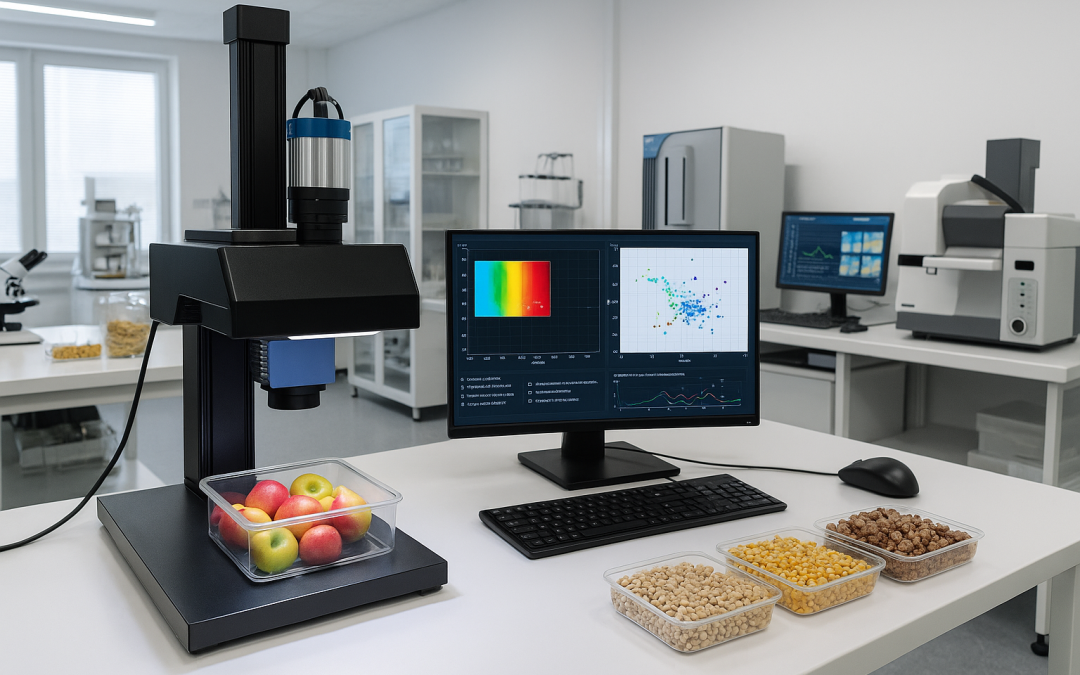Medina–García, M., Amigo, J. M., Martínez-Domingo, M. A., Valero, E. M., & Jiménez–Carvelo, A. M. (2025). Strategies for analysing hyperspectral imaging data for food quality and safety issues – A critical review of the last 5 years. Microchemical Journal, 214, 113994. https://doi.org/10.1016/j.microc.2025.113994
Hyperspectral imaging (HSI) is emerging as a powerful analytical tool for food quality and safety, offering high-resolution, non-destructive, and real-time analysis across all stages of food production. By combining spatial detail from computer vision with spectral data from classical spectroscopy, HSI provides a green alternative to conventional techniques.
This review analyzes five years of scientific advancements in HSI applied to food analysis, emphasizing data processing strategies and machine learning methods. Key approaches include analyzing whole food samples or treating them as pixel-level spectra. Data analysis techniques such as Principal Component Analysis (PCA), Partial Least Squares Regression (PLSR), Partial Least Squares Discriminant Analysis (PLS-DA), Support Vector Machines (SVM), and Soft Independent Modeling of Class Analogy (SIMCA) are reviewed for both qualitative and quantitative tasks.
HSI has proven effective for detecting adulteration, contamination, and non-conformity in complex food matrices. The integration of improved sensor technologies with machine learning has expanded its potential in industrial environments. However, challenges remain, including high costs, computational demands, and the need for standardized workflows. This review highlights both limitations and future research opportunities for large-scale implementation in food systems.
Prompted by SmartControl, Powered by ChatGPT Plus

